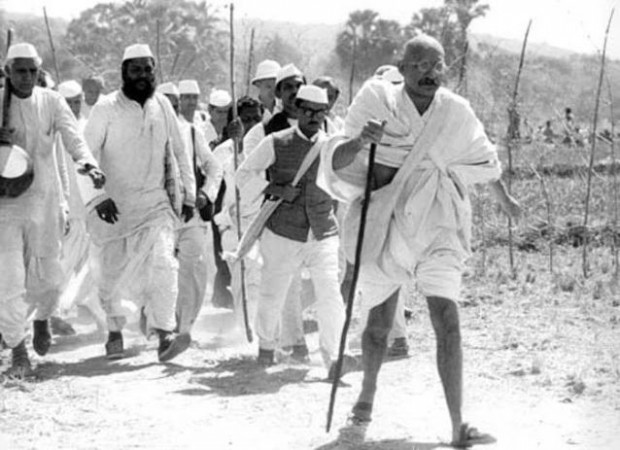
In the early 20th century, India was under British colonial rule, and its farmers faced numerous challenges imposed by exploitative landowners. One such region was Champaran in Bihar, where indigo planters subjected farmers to unjust and oppressive policies. Amidst this backdrop, a young lawyer named Mohandas Karamchand Gandhi, who later became renowned as Mahatma Gandhi, launched the Champaran Satyagraha to advocate for the rights of farmers and initiate a non-violent protest against British tyranny. This article delves into the historic event of the Champaran Satyagraha, highlighting Gandhi's steadfast determination to secure justice for the farmers.
1. Early Life of Mahatma Gandhi
Mohandas Karamchand Gandhi was born on October 2, 1869, in Porbandar, a small coastal town in present-day Gujarat, India. From a young age, he displayed a sense of justice and compassion for his fellow beings. Gandhi's principles of non-violence and truth (Satyagraha) would later shape his actions in the pursuit of justice.
2. The Indigo Planters' Exploitation
During the colonial era, the British forced Indian farmers in certain regions to cultivate indigo, a cash crop used to produce dye for the textile industry. The farmers were compelled to grow indigo instead of food crops, leading to widespread poverty and food shortages. Furthermore, they were subjected to unfair pricing and harsh treatment by the indigo planters, who held significant power.
3. Gandhi's Arrival in Champaran
In 1917, Mohandas Gandhi received an invitation from Rajkumar Shukla, a distressed farmer from Champaran, to come and witness the plight of the farmers. Gandhi, known for his activism and commitment to justice, decided to visit Champaran to assess the situation firsthand.
4. The Beginning of Satyagraha
Upon reaching Champaran, Gandhi was deeply moved by the sufferings of the farmers. He decided to stay and fight for their rights. With the support of local leaders and activists, Gandhi initiated the Champaran Satyagraha, a campaign of non-violent resistance against the oppressive indigo planters and the British authorities.
5. Non-Violent Resistance: A Novel Approach
Gandhi's unique approach to protest was rooted in non-violence, civil disobedience, and self-reliance. The Satyagraha movement encouraged the farmers to peacefully resist the unjust laws and policies, promoting moral and ethical principles rather than confrontational violence.
6. Gandhi's Arrest and Public Outrage
The British administration, threatened by the growing popularity of Gandhi and the Satyagraha movement, arrested him on charges of disobedience. However, this move backfired as public outrage surged across the country, leading to widespread protests demanding his release.
7. Negotiations and Triumph
Under mounting pressure, the British authorities released Gandhi and agreed to negotiate with him. The negotiations resulted in a significant victory for the farmers as the exploitative tinkathia system was abolished, and they were granted more control over their lands.
8. Legacy of the Champaran Satyagraha
The Champaran Satyagraha marked a turning point in India's struggle for independence. It demonstrated the power of non-violent resistance and its ability to bring about social and political change.
9. Influence on India's Freedom Struggle
The success of the Champaran Satyagraha inspired Gandhi to lead several other non-violent movements, such as the Non-Cooperation Movement and the Salt Satyagraha. These movements united people from all walks of life in their fight for freedom.
10. Champaran Satyagraha: An Inspiration Worldwide
The Champaran Satyagraha also garnered international attention and admiration for Gandhi's philosophy of non-violence. It inspired civil rights activists and leaders around the world, including Martin Luther King Jr. and Nelson Mandela.
11. Modern-Day Relevance
The principles of the Champaran Satyagraha remain relevant in contemporary times. Non-violent protests continue to be a potent tool for advocating justice and equality in various global movements.
12. The Importance of Non-Violent Protests
The Champaran Satyagraha taught the world that non-violent protests can be a force for change without resorting to bloodshed or violence.
13. Empowering Farmers: Challenges and Solutions
Despite progress, farmers still face challenges today. Empowering farmers through sustainable practices and fair policies is crucial for their well-being.
14. The Power of Collective Action
The Champaran Satyagraha showcased the strength of unity and collective action in achieving a common goal.
The Champaran Satyagraha stands as a testament to the power of compassion, perseverance, and non-violence. It serves as a reminder of the capacity of individuals to make a significant impact in their quest for justice. Gandhi's legacy lives on, inspiring generations to strive for a better world through peaceful means.
Subway India outlets drop tomatoes from menu citing THESE reasons